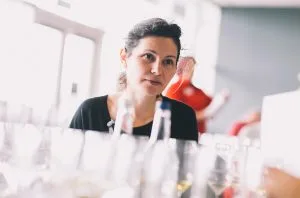Photo by Jaime Nugent on Unsplash
Sparkling rosé is a wonderful treat that is especially enjoyed during warm summer months.
Sparking rosé is versatile, aesthetic appealing, sophisticated, light and balanced in flavor, and suitable for various social settings and occasions. These factors combine to make sparkling rosé a popular choice among wine drinkers.
There are two methods of producing a sparkling wine. The key difference lies in where the secondary fermentation occurs:
Traditional Method (Méthode Champenoise):
Primary Fermentation: Red wine grapes are crushed, and the juice (must) is extracted and left in very brief contact with the skins. This give the base rosé wine its pale pink color.
Secondary Fermentation: Sugar and yeast are added to the base wine in the bottle. Just as in the Primary Fermentation, this new yeast and sugar interacts to produce alcohol and carbon dioxide (CO2), which forms the bubbles.
Aging on Lees: After fermentation is complete, the wine is aged on its lees (dead yeast cells) to develop flavor complexity. This process can take months to a few years.
Riddling: The bottles are gradually turned and tilted upside down to collect the lees in the neck of the bottle.
Disgorging: The neck of the bottle is frozen and the plug of frozen lees is removed.
Dosage: A small mixture of wine and sugar may be added to adjust the final sweetness of the sparkling wine.
Corking: A cork is inserted, the bottle is sealed and it is ready to be sold.
Tank Method (Charmat Method):
Primary
This Article was originally published on Ever Wonder Wine







